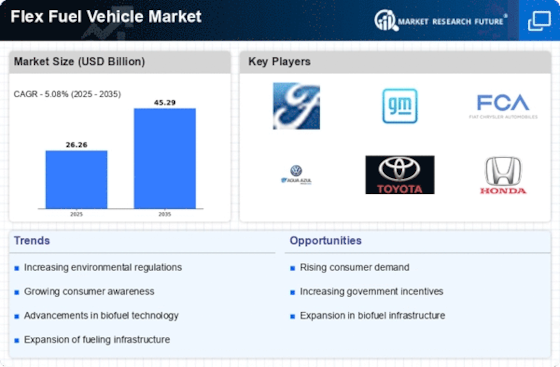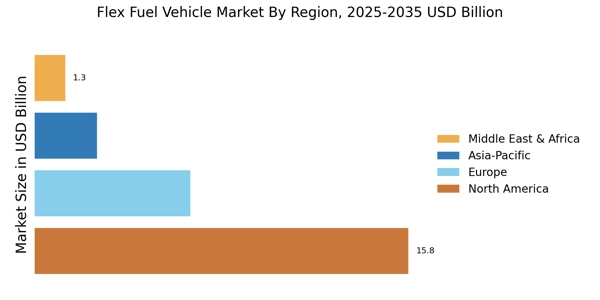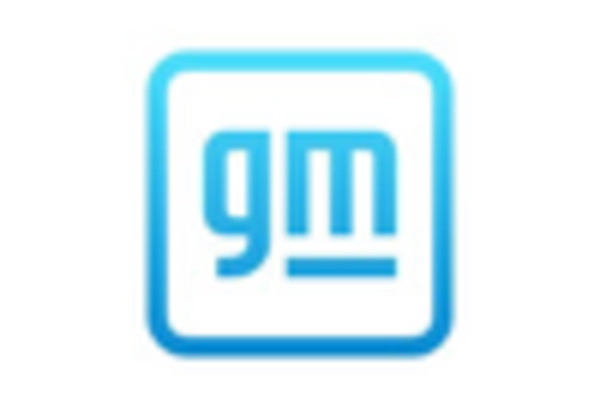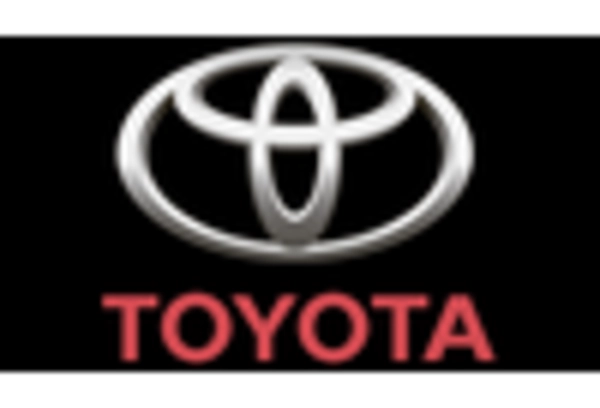Consumer Awareness and Education
Consumer awareness regarding the benefits of flex fuel vehicles is gradually increasing, which is positively impacting the Flex Fuel Vehicle Market. Educational campaigns and marketing efforts by manufacturers and environmental organizations are helping to inform potential buyers about the advantages of flex fuel technology, including reduced greenhouse gas emissions and lower dependency on fossil fuels. As of 2025, surveys indicate that a significant portion of consumers are becoming more environmentally conscious and are actively seeking sustainable vehicle options. This shift in consumer mindset is likely to drive demand for flex fuel vehicles, as individuals prioritize eco-friendly choices. The growing awareness and understanding of flex fuel technology could serve as a catalyst for growth within the Flex Fuel Vehicle Market.
Rising Fuel Prices and Economic Factors
Economic factors, particularly rising fuel prices, are playing a crucial role in shaping the Flex Fuel Vehicle Market. As consumers face increasing costs at the pump, there is a growing interest in vehicles that can utilize alternative fuels, such as ethanol and methanol. The volatility of oil prices has prompted many to seek more cost-effective and sustainable options. In 2025, the average price of gasoline has seen fluctuations, leading to a heightened awareness of the benefits of flex fuel vehicles. This economic pressure is likely to drive consumers towards flex fuel options, as they offer the potential for lower fuel costs and greater energy independence. Consequently, the Flex Fuel Vehicle Market may witness a notable uptick in demand as consumers prioritize economic viability.
Regulatory Incentives for Flex Fuel Vehicles
The Flex Fuel Vehicle Market is experiencing a surge in regulatory incentives aimed at promoting alternative fuel vehicles. Governments are implementing tax credits, rebates, and grants to encourage consumers and manufacturers to adopt flex fuel technology. For instance, certain regions have established mandates requiring a percentage of new vehicles to be flex fuel compatible. This regulatory framework not only stimulates demand but also fosters innovation within the industry. As of 2025, it is estimated that over 20 countries have enacted policies supporting flex fuel vehicles, which could lead to a significant increase in market penetration. Such incentives are likely to enhance the attractiveness of flex fuel vehicles, thereby driving growth in the Flex Fuel Vehicle Market.
Technological Innovations in Flex Fuel Systems
Technological advancements are significantly influencing the Flex Fuel Vehicle Market. Innovations in fuel system design, engine efficiency, and alternative fuel production are enhancing the performance and appeal of flex fuel vehicles. For example, improvements in engine calibration and fuel injection systems are enabling vehicles to operate more efficiently on a variety of fuel blends. As of 2025, manufacturers are increasingly investing in research and development to optimize flex fuel technology, which could lead to better fuel economy and reduced emissions. These technological strides not only improve the functionality of flex fuel vehicles but also contribute to a more sustainable automotive landscape. The ongoing evolution of technology is likely to bolster the Flex Fuel Vehicle Market, attracting both manufacturers and consumers alike.
Partnerships and Collaborations in the Industry
Strategic partnerships and collaborations among stakeholders are emerging as a key driver in the Flex Fuel Vehicle Market. Automakers, fuel producers, and technology developers are increasingly joining forces to enhance the development and distribution of flex fuel vehicles. These collaborations can lead to shared resources, knowledge, and technology, which may accelerate innovation and market penetration. For instance, partnerships between automotive manufacturers and biofuel producers are facilitating the establishment of a more robust supply chain for alternative fuels. As of 2025, such alliances are expected to strengthen the infrastructure necessary for flex fuel vehicles, making them more accessible to consumers. This collaborative approach is likely to foster growth and sustainability within the Flex Fuel Vehicle Market.



















Leave a Comment